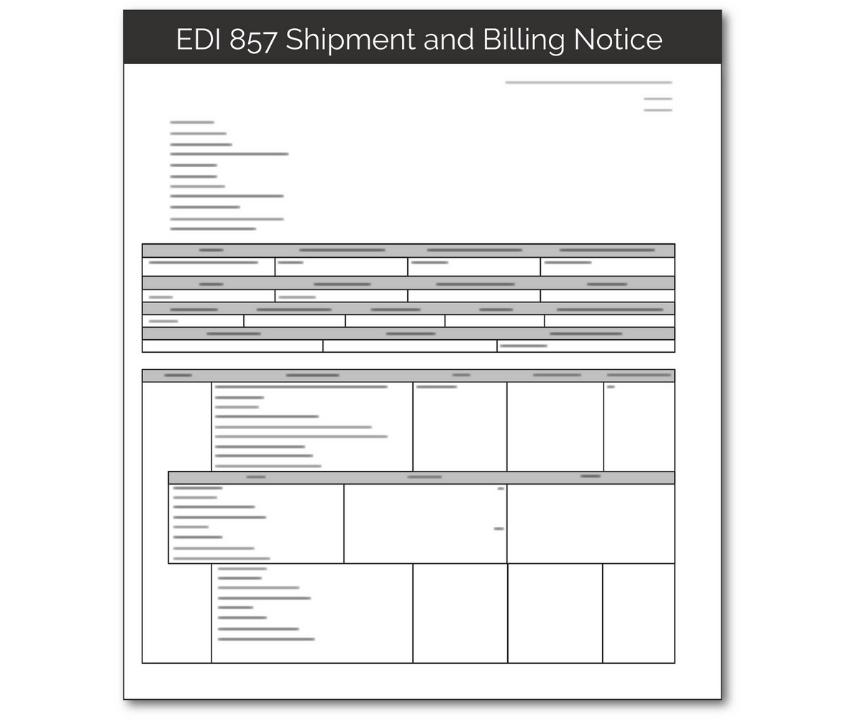EDI 857
Shipment and Billing Notice

What is an EDI 857?
EDI 857, also known as a Shipment and Billing Notice, is mainly used by suppliers to communicate information about a shipment and provide an invoice for the purchase. This EDI transaction code can be used instead of sending EDI 856 and EDI 880 (or EDI 810) separately.
EDI 857 documents follow the x12 format set by the American National Standards Institute (ANSI), a not-for-profit organization that regulates EDI formats in the U.S.
What are the Essential Components of EDI 857?
An EDI 857 Shipment and Billing Notice needs to include all necessary shipping and invoice information related to a specific order. Key details on EDI 857 include:
- Purchase order number
- Vendor and buyer contact information
- Carton, pack, and load identification information
- Product quantities, prices, and identifiers such as UPCs
- Ship from/to locations
- Carrier information
- Routing details, including expected delivery date

How do I Use EDI 857?
EDI 857 is commonly used by suppliers before the shipment arrives at the destination. Like an EDI 856 Advance Ship Notice, EDI 857 includes important details about a shipment, including arrival dates and load information, to help receiving warehouses, distribution centers and retail stores plan ahead.
However, EDI 857 also includes billing information, similar to an EDI 810 Invoice. In this respect, the EDI 857 document can be used to inform a buyer of the total charges due and solicit payment from them.
It’s important to note that EDI 857 doesn’t replace EDI 856 or EDI 810 individually; instead, it is used in place of sending them as a pair. Buyers will usually confirm receipt of the EDI 857 document by sending back an EDI 997 Functional Acknowledgement.
What are the Benefits of EDI 857?
Automating EDI 857 can save businesses from needing to waste time manually typing up shipping manifests and invoices. Since the integrated EDI system pulls data directly from other documents like the EDI 850 purchase order, it also helps reduce the possibility of errors, which can result in invoice discrepancies that delay payment. As a combined document, EDI 857 also saves extra time and cost by replacing the need to send two individual documents—EDI 856 and EDI 880/810— however, it is rare to see this use case.
Shipping details and invoices commonly include business information you may want to protect. While emails, PDFs and faxes are largely unsecure communication methods, EDI transactions are often protected by security protocols and user authentication; the best of those meet industry standards like SOC compliance. This helps keep purchase details, contact information and sensitive business information safe.
